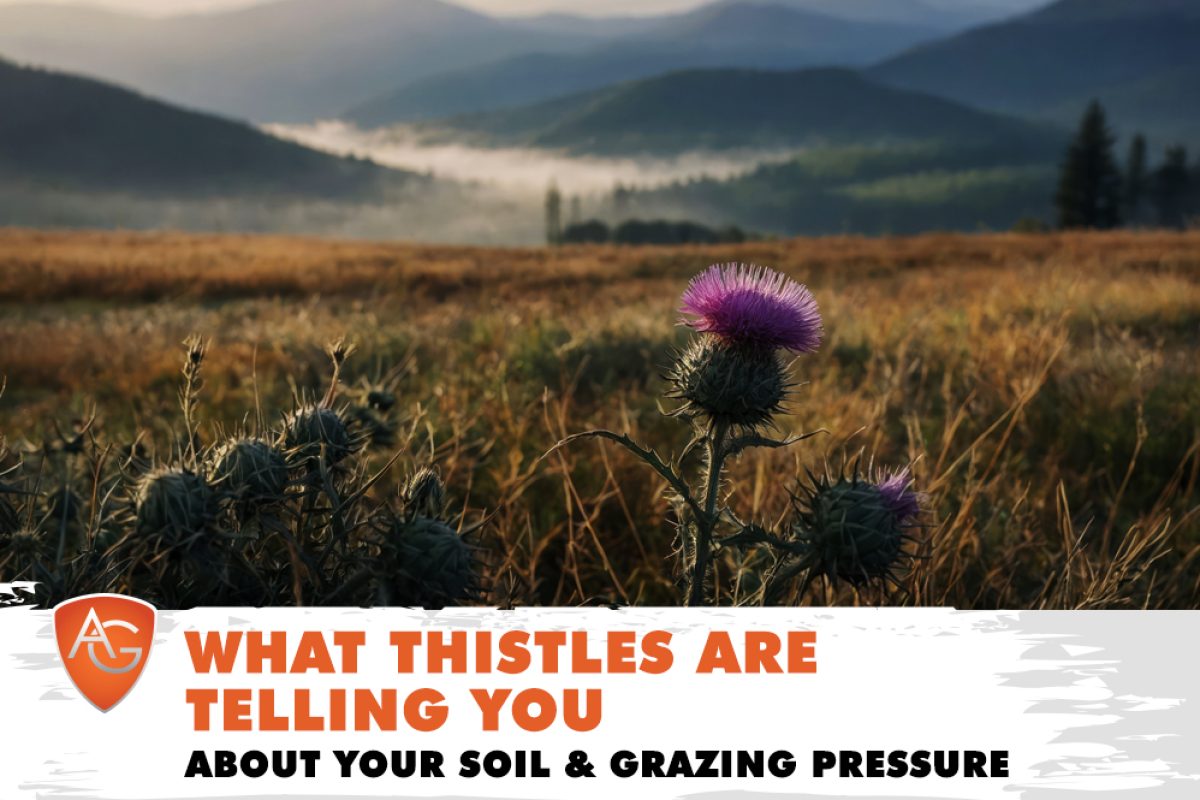Overview: Are thistles taking over your pasture? Learn what these tough weeds are saying about your soil health and grazing pressure. Get practical tips for Laramie County ranchers. Read on!
If you’re seeing more thistles than grass in your pastures, your soil is trying to tell you something — and it’s not good news. These invasive plants aren’t just a nuisance; they’re a red flag. For ranchers in Laramie County and the surrounding area, thistle growth is often a symptom of deeper issues with grazing management and soil health.
Let’s break it down.
Thistles Thrive on Disturbance and Neglect
Most thistles — including Canada thistle and musk thistle — prefer compacted soils, bare ground, and weak plant competition. If they’re showing up in force, it means your pasture grasses have lost the upper hand. Overgrazing, drought, or poor soil fertility can all contribute to these conditions.
Think of thistles as a signal, not just a problem.
>> Related Reading: How to Manage Invasive Thistle and Improve Your Soil
Grazing Pressure and Timing Matter
When livestock graze the same areas too often or too hard, they leave the ground vulnerable. Native grasses and forbs can’t recover fast enough, and opportunistic plants like thistle swoop in. This isn’t just about how many heads you’re running — it’s about timing, rest periods, and rotation.
Rotational grazing systems can go a long way in keeping weeds down and plant health up. If you’re running cattle on native grass or feeding cow hay through the season, your pasture plan should account for recovery time and forage quality.
Also Read >> The Do’s and Don’ts of Rotational Grazing As Pastures Start to Grow
What Your Soil Might Be Lacking
Poor fertility is another piece of the puzzle. Thistles often establish in soils low in organic matter and micronutrients. A basic soil test can reveal where you’re short — whether it’s nitrogen, phosphorus, or pH imbalance. Investing in the right amendments can bring your grasses back to life and outcompete thistle pressure.
Don’t Just Spray — Rebuild
It’s tempting to reach for herbicide, and sometimes that’s part of the solution. But unless you address the root cause — poor grazing patterns or depleted soil — they’ll just come back next year. A more sustainable approach includes reseeding with hardy forage mixes, adjusting stocking rates, and rotating animals based on pasture recovery.
Supporting Local Solutions
At All Around Ag, we know the value of a healthy pasture. That’s why we supply high-quality hay options — from Wyoming Timothy/Garrison to Orchard/Brome/Alfalfa mixes — that support your feeding program while protecting your ground. Whether you’re looking to rest a pasture, feed through the winter, or bulk up nutrition after a dry spell, we’re here to help keep your operation resilient.
Bottom Line
If thistles are creeping in, don’t ignore the message. Your soil and your grazing plan might be overdue for a check-up. With the right mix of observation, management, and support from trusted local resources, you can get your pastures back on track — and keep them there.
